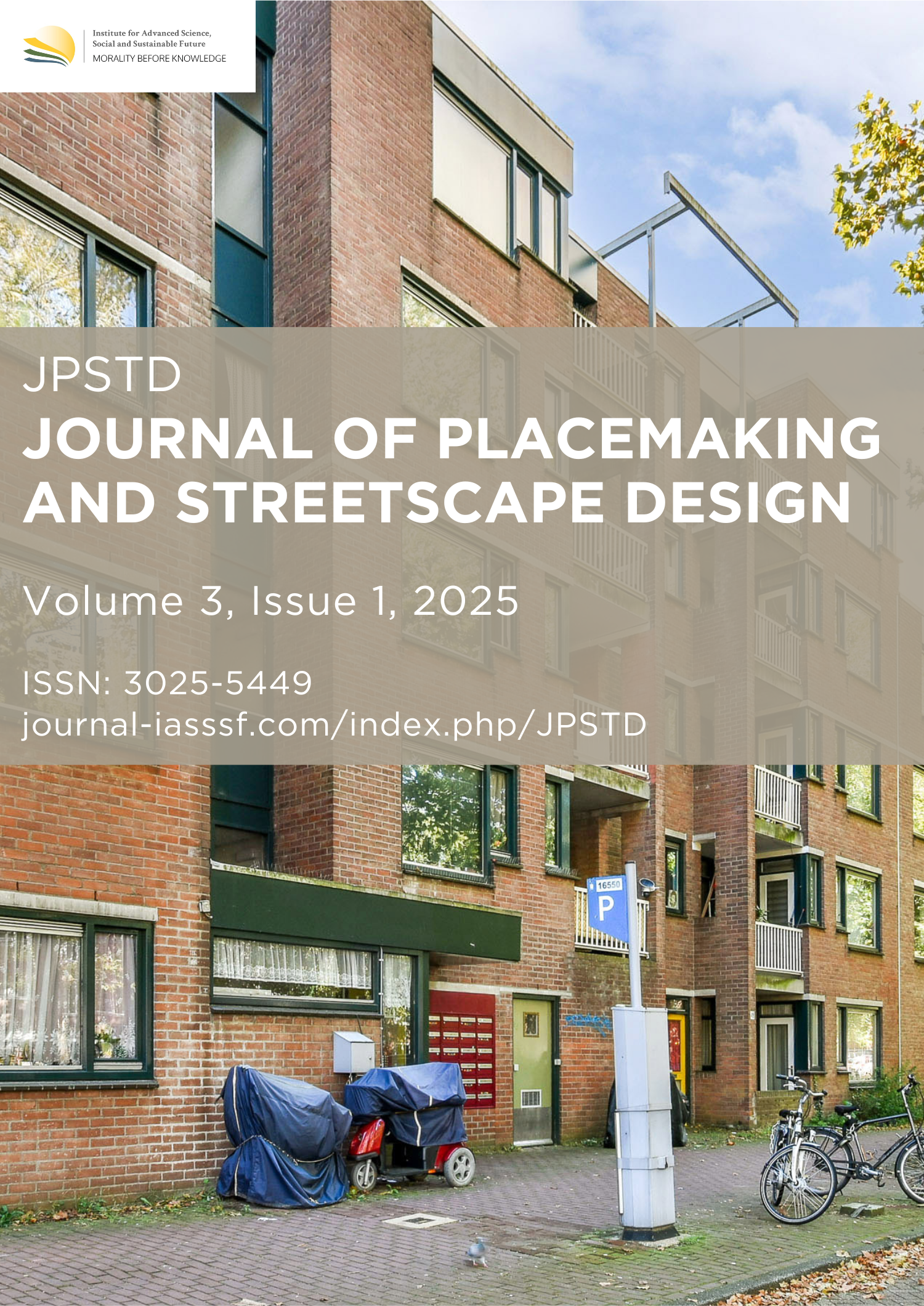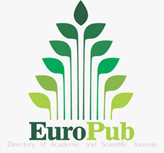Building climate-resilient urban communities through public space adaptation
DOI:
https://doi.org/10.61511/jpstd.v3i1.2025.2289Keywords:
climate change adaptation, community resilience, flooding, quality of life, urbanizationAbstract
Background: Climate change poses critical challenges to urban communities, particularly in densely populated areas where the quality of life is highly vulnerable to environmental disruptions. This study aims to analyze the impacts of climate change on health, socio-economic, and environmental dimensions within urban neighborhoods while assessing the community’s adaptive capacity in responding to these challenges. Methods: A descriptive qualitative approach was employed through in-depth interviews, field observations, and analysis of secondary data from meteorological, statistical, and policy sources. Findings: The results reveal tangible consequences such as health risks from flooding and extreme heat, economic disruptions affecting small businesses, and environmental degradation that heightens disaster vulnerability. While public awareness of climate issues is relatively strong, adaptive capacity remains constrained by limited resources, insufficient climate education, and minimal participatory policy support. Conclusion: The study highlights the need for community-based adaptation strategies that integrate climate-sensitive urban design, enhanced climate literacy, participatory policy frameworks, and technology-driven innovations. Strengthening these aspects is crucial for fostering climate-resilient public spaces and promoting community well-being. Novelty/Originality of this article: Unlike studies that approach climate change from a broad regional perspective, this research emphasizes community-level resilience by integrating health, socio-economic, and environmental dimensions into the discourse of urban design and placemaking. The findings contribute context-specific strategies that bridge participatory planning, education, and technology with sustainable public space design to support low-carbon development and urban resilience.
References
Abduh, A., & Siregar, S. (2024). Instrumen Keuangan Sosial Islam Dan Keberlanjutan Lingkungan (SDGs 13). In Islamic Business and Finance (IBF), 5(1). http://dx.doi.org/10.24014/ibf.v5i1.28345
Adger, W. N., Quinn, T., Lorenzoni, I., Murphy, C., & Sweeney, J. (2013). Changing social contracts in climate-change adaptation. Nature Climate Change, 3(4), 330–333. https://doi.org/10.1038/nclimate1751
Ajzen, I. (1991). The theory of planned behavior. Organizational Behavior and Human Decision Processes, 50(2), 179–211. https://doi.org/10.1016/0749-5978(91)90020-T
Balogun, A. L., Marks, D., Sharma, R., Shekhar, H., Balmes, C., Maheng, D., ... & Salehi, P. (2020). Assessing the potentials of digitalization as a tool for climate change adaptation and sustainable development in urban centres. Sustainable Cities and Society, 53, 101888. https://doi.org/10.1016/j.scs.2019.101888
BAPPENAS. (2023). Rencana pembangunan jangka menengah nasional 2020-2024: Penanganan perubahan iklim. Badan Perencanaan Pembangunan Nasional.
Bowen, G. A. (2009). Document analysis as a qualitative research method. Qualitative Research Journal, 9(2), 27–40. https://doi.org/10.3316/QRJ0902027
BPS. (2022). Statistik Indonesia 2022. Badan Pusat Statistik. https://www.bps.go.id/id/publication/2022/02/25/0a2afea4fab72a5d052cb315/s
Braun, V., & Clarke, V. (2006). Using thematic analysis in psychology. Qualitative Research in Psychology, 3(2), 77–101. https://doi.org/10.1191/1478088706qp063oa
Braun, V., & Clarke, V. (2019). Reflecting on reflexive thematic analysis. Qualitative Research in Sport, Exercise and Health, 11(4), 589–597. https://doi.org/10.1080/2159676X.2019.1628806
Creswell, J. W., & Poth, C. N. (2018). Qualitative inquiry and research design: Choosing among five approaches (4th ed.). Sage.
Cruz, R. V. O., Harasawa, H., Lal, M., Wu, S., Anokhin, Y., Punsalmaa, B., & Takahashi, K. (2009). Asia. In M. L. Parry, O. F. Canziani, J. P. Palutikof, P. J. van der Linden, & C. E. Hanson (Eds.), Climate change 2007: Impacts, adaptation and vulnerability (pp. 469–506). Cambridge University Press. https://www.ipcc.ch/site/assets/uploads/2018/02/ar4-wg2-chapter10-2.pdf
Denzin, N. K. (1978). The research act: A theoretical introduction to sociological methods (2nd ed.). McGraw-Hill.
Ensor, J., & Berger, R. (2009). Understanding climate change adaptation: Lessons from community-based approaches. Practical Action Publishing.
Flick, U. (2018). Triangulation in qualitative research. In The SAGE handbook of qualitative data collection (pp. 527–544). SAGE Publications. https://doi.org/10.4135/9781526416070.n29
Gold, R. L. (2018). Roles in sociological field observations. In Field Research: A Sourcebook and Field Manual (pp. 30–41). Routledge.
Grothmann, T., & Patt, A. (2005). Adaptive capacity and human cognition: The process of individual adaptation to climate change. Global Environmental Change, 15(3), 199–213. https://doi.org/10.1016/j.gloenvcha.2005.01.002
Hidayati, I. N., & Suryanto, S. (2015). Pengaruh perubahan iklim terhadap produksi pertanian dan strategi adaptasi pada lahan rawan kekeringan. Jurnal Ekonomi & Studi Pembangunan, 42-52. https://journal.umy.ac.id/index.php/esp/article/view/1217
Jakarta Health Office. (2022). Laporan kesehatan Provinsi DKI Jakarta 2022. Dinas Kesehatan Provinsi DKI Jakarta. https://ppid-dinkes.jakarta.go.id/laporan
Kenny, G. P., Yardley, J., Brown, C., Sigal, R. J., & Jay, O. (2010). Heat stress in older individuals and patients with common chronic diseases. CMAJ, 182(10), 1053–1060. https://doi.org/10.1503/cmaj.081050
KLHK. (2004). Laporan status lingkungan hidup Indonesia. Kementerian Lingkungan Hidup. https://www.menlhk.go.id/cadmin/uploads/SLHI_2022_upload_final_77f9948571.pdf
Kvale, S., & Brinkmann, S. (2015). InterViews: Learning the craft of qualitative research interviewing (3rd ed.). SAGE Publications.
Lawler, J. J., Spencer, B., Olden, J. D., Kim, S., Lowe, C., Bolton, S., & Voss, J. G. (2013). Mitigation and adaptation strategies to reduce climate vulnerabilities and maintain ecosystem services. Climate vulnerability, 315. https://doi.org/10.1016/B978-0-12-384703-4.00436-6
Leichenko, R., & O'Brien, K. (2008). Environmental change and globalization: Double exposures. Oxford University Press. https://doi.org/10.1093/oso/9780195177312.001.0001
Lopez & Snyder, (2004). Human Of Quality. http://www.dokumen.org/pdf/1086667
Nowell, L. S., Norris, J. M., White, D. E., & Moules, N. J. (2017). Thematic analysis: Striving to meet the trustworthiness criteria. International Journal of Qualitative Methods, 16(1), 1–13. https://doi.org/10.1177/1609406917733847
Paton, D. (2003). Disaster preparedness: A social-cognitive perspective. Disaster Prevention and Management, 12(3), 210–216. https://doi.org/10.1108/09653560310480686
Petzold, J., Andrews, N., Ford, J. D., Hedemann, C., & Postigo, J. C. (2020). Indigenous knowledge on climate change adaptation: a global evidence map of academic literature. Environmental Research Letters, 15(11), 113007. https://doi.org/10.1088/1748-9326/abb330
Salimi, M., & Al-Ghamdi, S. G. (2020). Climate change impacts on critical urban infrastructure and urban resiliency strategies for the Middle East. Sustainable Cities and Society, 54, 101948. https://doi.org/10.1016/j.scs.2019.101948
Schlosberg, D., & Collins, L. B. (2014). From environmental to climate justice: Climate change and the discourse of environmental justice. Wiley Interdisciplinary Reviews: Climate Change, 5(3), 359–374. https://doi.org/10.1002/wcc.275
Urifah, R. (2012). Hubungan antara Strategi Koping dengan Kualitas Hidup Pada Pasien Skizofrenia Remisi Simptom. Jurnal Psikologi Klinis dan Kesehatan Mental, 1(2). https://journal.unair.ac.id/filerPDF/110511133_2v.pdf
WHO. (1996). Environmental health criteria 180: Principles and methods for assessing direct immunotoxicity associated with exposure to chemicals. World Health Organization.
WHO. (2020). Climate change and health. World Health Organization. https://apps.who.int/gb/ebwha/pdf_files/EB154/B154_25-en.pdf
World Economic Forum. (2022). BiodiverCities by 2030: Transforming cities’ relationship with nature. United Nations, ARUP, C40 Cities, University of Leeds, & World Economic Forum. https://www.weforum.org/whitepapers/biodivercities-by-2030-transforming-cities-relationship-with-nature/
Zeigermann, U., Kammerer, M., & Böcher, M. (2023). What drives local communities to engage in climate change mitigation activities? Examining the rural–urban divide. Review of Policy Research, 40(6), 894-919. https://doi.org/10.1111/ropr.12528
Downloads
Published
How to Cite
Issue
Section
License
Copyright (c) 2025 Gemilang Mohammad Sakti

This work is licensed under a Creative Commons Attribution 4.0 International License.
















